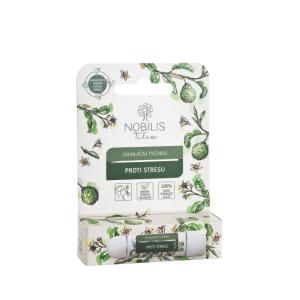
Discover the Magic of Box Breathing and Find Inner Peace

The Secret of Box Breathing - A Simple Technique with Surprising Power
In today's fast-paced world, many people are looking for ways to manage stress, improve concentration, or simply feel calmer. While some methods require expensive courses, apps, or gadgets, others are so simple that they can be practiced anytime, anywhere—requiring nothing more than your own breath. One of these methods is box breathing, also known as box breathing. Despite its simple name and technique, it hides unexpected depth and scientifically proven benefits.
What is Box Breathing and Where Does it Come From?
Box breathing is a breathing technique that focuses on a regular rhythm of inhaling, holding the breath, exhaling, and holding again—each step lasting the same number of seconds, usually four. This four-step cycle resembles the four sides of a square, hence the name. The technique was originally popularized in the training of Navy SEALs in the USA as a way to manage extreme stress, remain focused, and maintain control over the body and mind even in the most tense situations.
Since then, box breathing has found its way into everyday life. Today, therapists, psychologists, coaches, and mindfulness experts recommend it as an effective tool against anxiety, stress, and burnout. It works regardless of age or physical condition—the key is patience and regularity.
How Box Breathing Affects the Body and Brain
It sounds almost suspiciously simple: inhale for four counts, hold the breath for four, exhale for four, hold again, and repeat. Yet this technique activates natural physiological processes that have a calming effect on the entire organism. Slowing the breath and its regularity help reduce the activity of the sympathetic nervous system (the so-called "fight or flight"), while activating the parasympathetic system—responsible for "rest and digest."
In practice, this means slowing down the heart rate, lowering blood pressure, and releasing muscle tension. The brain also receives a signal that it is safe, allowing better concentration, greater emotional stability, and overall calmness. Research in neuroscience confirms that conscious breathing can even influence activities in the amygdala—the part of the brain that controls reactions to stress and fear.
Try our natural products
When and How to Use Box Breathing
There is no "wrong time" for box breathing. It can be part of a morning routine, help before an important job interview, during a commute, or right before bedtime. It is particularly beneficial in situations where one feels that the ground has slipped beneath their feet. For example, during work overload, a conflicting conversation, or a panic attack.
Let's imagine a real-life example: Petra, a project manager in a mid-sized company, is used to working under pressure. However, when she learned that a client had changed the assignment at the last minute before an important presentation, she panicked. Her hands were shaking, her heart was pounding, and she couldn't concentrate. Her colleague, who had experience with meditation, recommended a simple breathing exercise. Petra sat down, closed her eyes, and started: inhale for four counts, hold, exhale, hold. After three minutes, her breathing slowed, her hands steadied, and her mind calmed. The presentation went surprisingly well—not only because of the preparation but also because of the ability to regain inner balance.
How to Start? A Practical Guide
The technique of box breathing is so simple that even a child can master it. Ideally, find a quiet place where you won't be disturbed. Sit up straight, but not stiffly, with feet on the ground, hands in your lap or on your thighs.
- Inhale through the nose for four seconds. Feel your lungs filling with air.
- Hold your breath for four seconds. Don't create tension, just feel calm.
- Slowly exhale through the mouth for four seconds.
- Hold your breath again for four seconds.
Repeat the entire cycle for 3–5 minutes. If the four-second rhythm is too challenging, start with three seconds or extend the individual phases. The important thing is to maintain uniformity—so that each step lasts the same amount of time.
Why "Box"?
The name of the technique is no accident. Many people imagine a square during practice, with each phase of the breath traveling along one side. This visualization helps maintain rhythm and also occupies the mind, limiting space for distracting thoughts. Some therapists recommend imagining the square during practice or even tracing it with a finger in the air or on a table. This connects the breath with movement and visual imagination, enhancing the technique's effectiveness.
Box Breathing in the World of Sports, Work, and Education
Today, this breathing method is used not only in therapy or mindfulness practice but has also found its place in sports, corporate environments, and schools. Elite athletes use box breathing before competitions for calm and focus. Teachers use it during lessons to help children manage emotions or regain attention after more demanding activities. Some companies even incorporate short "breathing breaks" during the workday to support performance and mental well-being of employees.
According to an article in Harvard Health Publishing, regular conscious breathing can contribute to improving the immune system, sleep quality, and reducing symptoms of chronic fatigue. And it's the simplicity of box breathing that makes it an ideal tool even for those who are new to breathing techniques.
A Small Step to a Big Change
We breathe all our lives—often without awareness of how much our breath can affect our psyche. This is where the magic of box breathing lies. It is a subtle yet powerful tool that is always at hand. People who have incorporated it into their daily routine often describe feeling more balanced, better able to handle external pressures or conflicting situations. And most importantly, they regain something often lost in modern life—control over their attention and calm.
This technique may not change the world, but it can change the way we respond to the world. And sometimes, that's where true calm lies.


